Should You Have One in Your Gear Bag?
Douglas Ebersole, MD – RAID Medical Advisor
With the current COVID-19 pandemic there have been reports of patients with low blood oxygen levels but very little in the way of symptoms. As a result, pulse oximetry has been getting a lot of press. Divers have been especially concerned after a recent report of six divers who felt they had recovered from COVID-19, but were found to have markedly abnormal CT scans of the lungs. This has led to a number of divers purchasing pulse oximeters, often with very little understanding of how they work. So, what do divers need to know about pulse oximeters?
Basic Respiratory Physiology
As you likely remember from high school biology, the right side of the heart pumps oxygen-poor blood to the lungs to get oxygen. The oxygen rich blood from the lungs then returns to the left side of the heart and is pumped to the tissues of the body which extract oxygen and return the blood to the right side of the heart to start the cycle all over again.
Oxygen is carried in the blood by red blood cells containing hemoglobin, a protein which has binding sites for four oxygen molecules. While some oxygen is dissolved in the blood, this is a very small amount compared to the amount of oxygen carried by hemoglobin. Hemoglobin increases oxygen carrying capacity by over 70-fold compared to dissolved oxygen in blood alone. The percentage of hemoglobin binding sites that have bound oxygen, termed oxygen saturation, is based on the partial pressure of oxygen. Blood leaves the lungs with a partial pressure of oxygen (PO2) of about 100 mm Hg, corresponding to an oxygen saturation of about 98%. This means 98% of the hemoglobin oxygen binding sites have an oxygen molecule attached. The body’s tissues metabolize oxygen so that in the tissues the PO2 is around 40 mm Hg, corresponding to about 75% oxygen saturation. As a result hemoglobin releases oxygen molecules in the tissues and then binds carbon dioxide, the waste product of the cells, and carries it back to the lungs where the carbon dioxide is released and more oxygen bound.
Refer to the image of the oxyhemoglobin saturation curve and note that it is a sigmoid shaped curve. There is NOT a linear relationship between PO2 and oxygen saturation. At upper levels of PO2, there can be a significant drop in PO2 without much change in oxygen saturation. However, below a PO2 of about 40 mm Hg, small drops in PO2 can result in large drops in oxygen saturation.
So, for a healthy individual who has a normal, PO2, supplemental oxygen is really going to do nothing for your oxygen saturation. However, with diseases such as pneumonia where gas exchange in the lungs is compromised, PO2 can decrease to the point that there is not enough oxygen bound to hemoglobin to provide tissues the needed amount of oxygen. Oxygen saturations of < 90% are of concern and where supplemental oxygen is useful. You can measure the PO2 and oxygen saturation directly by drawing blood from an artery or you can noninvasively monitor the oxygen saturation using a device called a pulse oximeter.
What is a Pulse Oximeter?
A pulse oximeter is a small device that looks like a clothes pin or a chip clip. You place your finger inside of it and within seconds it will light up with your heart rate and oxygen saturation. Most healthy people should have oxygen saturation of around 95-98%. As mentioned above, values < 90% are concerning and should be relayed to your physician.
How does a Pulse Oximeter Work?
When you insert your finger into a pulse oximeter, it beams different wavelengths of light through your finger. Hemoglobin absorbs different amounts and different wavelengths of light depending on the level of oxygen it is carrying. It then displays your oxygen saturation and pulse rate. Of note, these devices work better with warmer hands than with colder hands and do not work well with dark nail polish. Usually, the index finger or third finger works best. The accuracy of professional devices used in hospitals is within two percentage points of that directly measured from a sample of blood taken from the artery.
When are Pulse Oximeters Helpful?
There are many diseases that result in lower than normal oxygen levels in the blood. Some of these diseases, including COVID-19, can result in very low oxygen saturation in the body but with a paucity of symptoms, at least initially. Pulse oximetry can be very helpful here. While monitoring yourself for symptoms of cough, shortness of breath, fever, and chest pain is most important, a lower than expected oxygen saturation reading on a pulse oximeter might give you an early warning that you are decompensating and need to seek medical attention sooner as opposed to later.
Also, some people recovering from respiratory illnesses such as COVID-19 may have normal resting oxygen levels in their blood, but then have these markedly decrease with exercise. This is called exercise-induced hypoxemia and is a marker of persistent inadequacies in ventilation and gas exchange. It usually manifests at or near maximum exertion. Obviously, this could be a concern for the diver who feels well and has a normal resting oxygen saturation, but who would develop hypoxemia with scuba diving. Hence, if you are recovering from a respiratory illness such as COVID-19, your physician may recommend you have normal pulse oximetry, both at rest and with exercise, before returning to diving.
I Want One!
If you decide that you would like to have your own pulse oximeter, remember buyer beware. At-home pulse oximeters can vary widely in accuracy – by as much as 6% according to a 2016 study published in the South African Medical Journal. This study compared low-cost, portable fingertip oximeters with bedside monitors used in hospitals and found that fingertip pulse oximeters were reliable under normal oxygen level conditions but less reliable during low-oxygen level situations. You would think that the more the device costs, the more accurate it would be, but this is simply not necessarily the case. Before purchasing one, go to the FDA’s 510k Premarket Notification Database and search for “oximeter” LINK HERE.
Smartphone apps and wearable devices like those from Fitbit and Garmin, and rumored to be coming soon from Apple, use a slightly different technology to approximate blood-oxygen levels. Instead of measuring “transmittance” of light with a receiver on the other side of the finger, wearable devices and camera-based apps use “reflectance”, usually against the wrist, to estimate oxygen saturation. According to Dr. Philip Bickler, a professor of anesthesia and director of the Hypoxia Lab at University of California San Francisco, the current “reflectance” devices are less accurate than the standard “transmittance” oximetry. So stay tuned.
In Conclusion:
- Pulse oximeters are devices that monitor the percentage of hemoglobin oxygen binding sites which have oxygen molecules attached.
- Many respiratory diseases including COVID-19 can cause hypoxemia at rest with no to minimal symptoms and this hypoxemia can worsen with exercise.
- If you have a respiratory illness, while following your symptoms is far more important, pulse oximeters can be used to detect asymptomatic hypoxemia which may indicate your condition is worsening and that you should seek medical attention.
- Rest and exercise pulse oximetry can be helpful in gauging when it is safe for divers who have suffered COVID-19 or other respiratory illnesses to return to diving and other physical activities.
- While you can leave pulse oximeters to the professionals, if you decide to get one for yourself, do your research on the FDA website above before purchasing one.
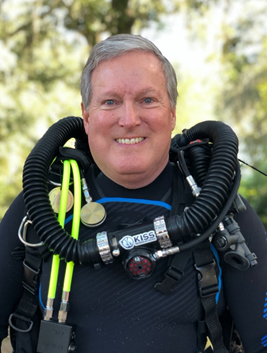
- RAID Launches Independent Diver Course - April 2, 2024
- RAID ZERO FEe-MEMBERSHIP – 2022 UPDATE - April 27, 2022
- Go Dive Show Updates - February 21, 2022
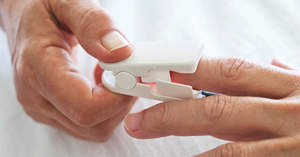
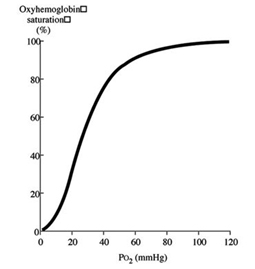
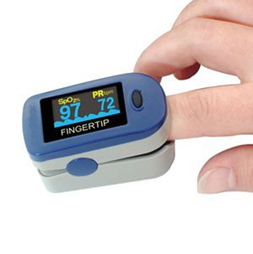
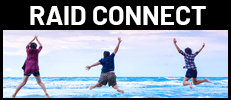
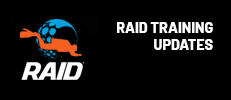

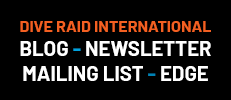
Your post is very informative …. now i know can understand more about pulse oximeter … its really helpful …..Thankyou
Thank you so much for sharing a wonderful information with us. It was really nice to read a article written in this kind of topic. This article is extremely helpful exceptionally fascinating subject I am looking for that. You talk about the using system of pulse oximeter and how it’s works.You also describe about it’s function and everything we need to know. The world is facing a pandemic situation which is called covid-19 or corona virus .Pluse oximeter can helps us to find the rate of oxygen in our body. Your article is very much important for our day to day life who exactly need pulse oximeter. You also talk about other formats of pulse oximeter and it’s pricing.So I think people can find your post very useful.
https://pinzira.com/product/renovevo-fingertip-pulse-oximeter-qg3aj